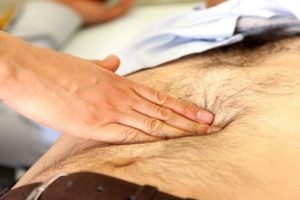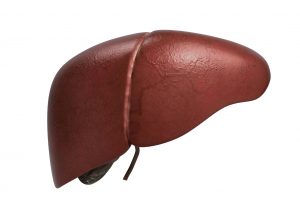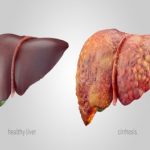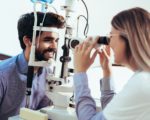Eye floaters are spots moving through your field of vision. They may appear black or grey, stringy or cobweb-like, they may move, drift, or dart when you move your eyes. Many eye floaters are brought on by age-related changes in the eyes – for example, when the jellylike substance of the eye becomes liquefied. If eye floaters appear and increase quickly or suddenly, you should see an eye specialist right away.
There are many different reasons for eye floaters. Some are harmless and others require immediate medical attention. The following natural remedies may help you get rid of eye floaters.
Home remedies for eye floaters
Below are some home remedies to get rid of eye floaters:
Relax: Sometimes, when your eyes are tired or strained, it can contribute to eye floaters, so getting some good rest is imperative.
Give yourself a massage: Massage your temples gently while your eyes are closed and covered with a warm cloth. You can also rub your hands together to generate heat and place them over your eyelids.
Do some eye exercises: Roll your eyes in circular motions clockwise, then counter-clockwise. Repeat a few times a day. Another exercise is to hold an object (for example, a pen) in front of you as far away as possible. Focus on the object and slowly bring it closer to your face – about six inches away. Repeat moving it further and closer a few times.
Limit TV and screen time: Prolonged screen time can harm your eyes.
Drink plenty of water: Water can help detox the body, as eye floaters may be indicative of a toxin accumulation.
Eat antioxidant-rich foods: Foods high in antioxidants can help fight off free radical damage (which can lead to eye floaters). Antioxidant-rich foods include blueberries, kale, pomegranate, oranges, and strawberries.
Eat taurine-rich foods: Eating foods high in taurine can help support healthy vision. Examples include meat and seafood.
Do yoga: Yoga can reduce stress, and many of the movements require your eyes to be closed which can help them rest.
Use sunglasses: Wearing sunglasses can protect your eyes from UV rays that are harmful for your eyes.
Sleep well: Getting proper sleep will ensure that your eyes are not strained or tired.
Other treatments for eye floaters
In cases where medical treatment is required to treat eye floaters, some options are:
- Using a laser to disrupt the floaters, breaking them up, and making them less noticeable
- Removing the vitreous humor surgically
For the most part, you will have to continue monitoring your eye floaters to ensure they are not worsening and impacting your vision. Follow-up appointments are necessary to ensure no other complications have developed.
You should see a doctor immediately if you get more eye floaters, there is a sudden onset of new eye floaters, you begin to see flashes of light, and if you experience
peripheral vision loss (side vision loss). These symptoms could signify a retinal tear or retinal detachment, which could contribute to vision loss if not taken care of right away.
Eye exercises and self-acupressure for eye floaters
You may have heard of the traditional Chinese medicine of acupressure, which involves applying pressure to points in the body to boost circulation and promote healing. This treatment is similar to acupuncture, but instead of using fine needles, fingers target the healing points.
Acupressure for eye health is an effective natural way to improve eyesight – and you can easily perform it on yourself.
There are seven acupressure points around the eye to focus on. They start at the corner of your eye – closest to your nose – and continue across the brow, ending underneath your eyelid. Massaging each point for at least 10 seconds will increase circulation to the eyes.
In Chinese medicine, energy meridians run along the body and connect certain parts together. So another effective pressure point for your eye health is the tip of your thumbs. By massaging this point, you can target areas in the neck in order to boost circulation to the eyes. Massaging both your thumbs regularly can lead to brighter, clearer eyesight. You can achieve similar results by massaging your big toe.
Acupressure is easy to perform and can be done daily – all you need is a few spare minutes to improve your eyesight.
There are a variety of exercises for your eyes. For starters, you can blink. Every time you blink, you create moisture, which in turn soothes the eyes. If you start feeling some eye strain, simply blink continuously for four to five seconds.
Other forms of exercise are breathing or meditation, often easier to do first thing in the morning or at the end of the day. By closing your eyes and focusing on your breathing, you can recharge. Inhale through the nose and exhale through the mouth for at least two minutes, then open your eyes without focusing on anything in particular. Repeat at least three times.
Giving your eyes a break is a great way to improve eyesight. Just remember to avoid eyestrain by looking away from your computer screen, for example, and don’t watch too much television.
What to avoid if you have eye floaters
When living with eye floaters you should avoid the following:
- Using the computer or watching TV in the dark
- Watching a lot of movies
- Reading in poor light
- Wearing sunglasses for long periods of time
You should also avoid stressful situations and emotional turmoil. If you are a smoker, quit. If you don’t smoke, avoid secondhand smoke. Moderating your alcohol intake is always good idea.
https://www.belmarrahealth.com/getting-rid-eye-floaters-home-remedies-exercise/
Others:
MOST POPULAR IN EYE HEALTH





